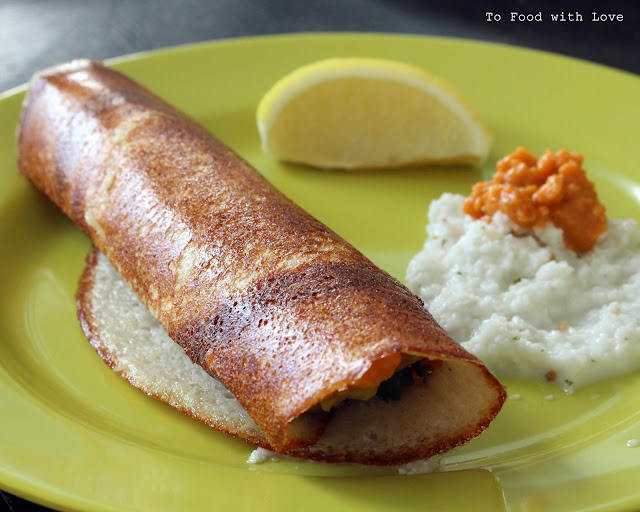This cake was inspired by the cover of this month's Coles magazine, which actually uses an instant butter cake mix. I decided to make the cake even more festive by making a cream cheese pound cake bursting with fresh cherries, drizzled over some orange glaze icing and decorated it with more cherries! A generous dusting of icing sugar always creates a pretty snowflake effect, and to complete the Christmas wreath look, I added a sprig of mint leaves which I picked from the garden.
 |
| Little Hilary insisted on "framing" the photo with Christmas decorations... |
This cake is perfect with a cuppa for afternoon tea, and is fantastic when served warm with that delicious orange glaze icing. The cream cheese in the cake adds more of a "creamy" texture to the cake, and not so much of flavour. The recipe I used called for maraschino cherries, but I substituted with fresh cherries instead. I reckon you can use cranberries too if you like. I must admit, the trickiest part was trying to keep the cherries from falling off the top of the cake as I was taking pictures of it. Other than that, this cake is really easy to make and is sure to impress your family and friends this Christmas!
Adapted from Allrecipes.com
Ingredients
2 cups all-purpose flour
3 teaspoons baking powder
1/2 teaspoon salt
1 cup butter
1 (8 ounce) package cream cheese
1 1/2 cups caster sugar
4 eggs
1 teaspoon vanilla extract
1 teaspoon almond extract (I subtituted with 1 tsp almond essence)
1 1/2 cup maraschino cherries (or substitute with fresh pitted cherries), drained and halved
1/4 cup all-purpose flour
Fresh cherries for decorating
Icing sugar for dusting
Sprigs of mint leaves
Orange glaze icing:
1 1/2 cups icing sugar
About 2 tbsp fresh orange juice
Method
- Preheat oven to 325F (165C). Grease and flour an 8 inch tube/bundt pan. Mix together the flour, baking powder, and salt. Set aside.
- In a large bowl, cream together the butter, cream cheese, and sugar until light and fluffy. Beat in the eggs one at a time, then stir in the vanilla and almond extract. Beat in the flour mixture, mixing just until incorporated. Dredge the well-drained cherries in 1/4 cup flour, then gently fold into batter. Spread into prepared pan and level the mixture with a spatula.
- Bake in the preheated oven for 60-80 minutes, or until a toothpick inserted into the center of the cake comes out clean. Let cool in pan for 10 minutes, then turn out onto a wire rack and cool completely.
- Once the cake has cooled, combine the ingredients for the orange glaze icing in a bowl until you get a smooth mixture that is not too runny. Drizzle the cake with the glaze and arrange fresh cherries on top. Add a sprig (or more) of mint leaves. Dust liberally with icing sugar. This cake is best served slightly warm (a few seconds in the microwave works great!).
Tip:
I didn't have a cherry-pitter. So, in order to pit the cherries, I first removed the stem, then inserted the end of a chopstick from the top of the cherry and pushed it straight through the centre until the pit/seed popped out below. Gets a little messy but it does the job! Alternatively, just use a sharp knife to cut around the seed, twist the cherry halves apart and pry out the seed with your fingers.










































